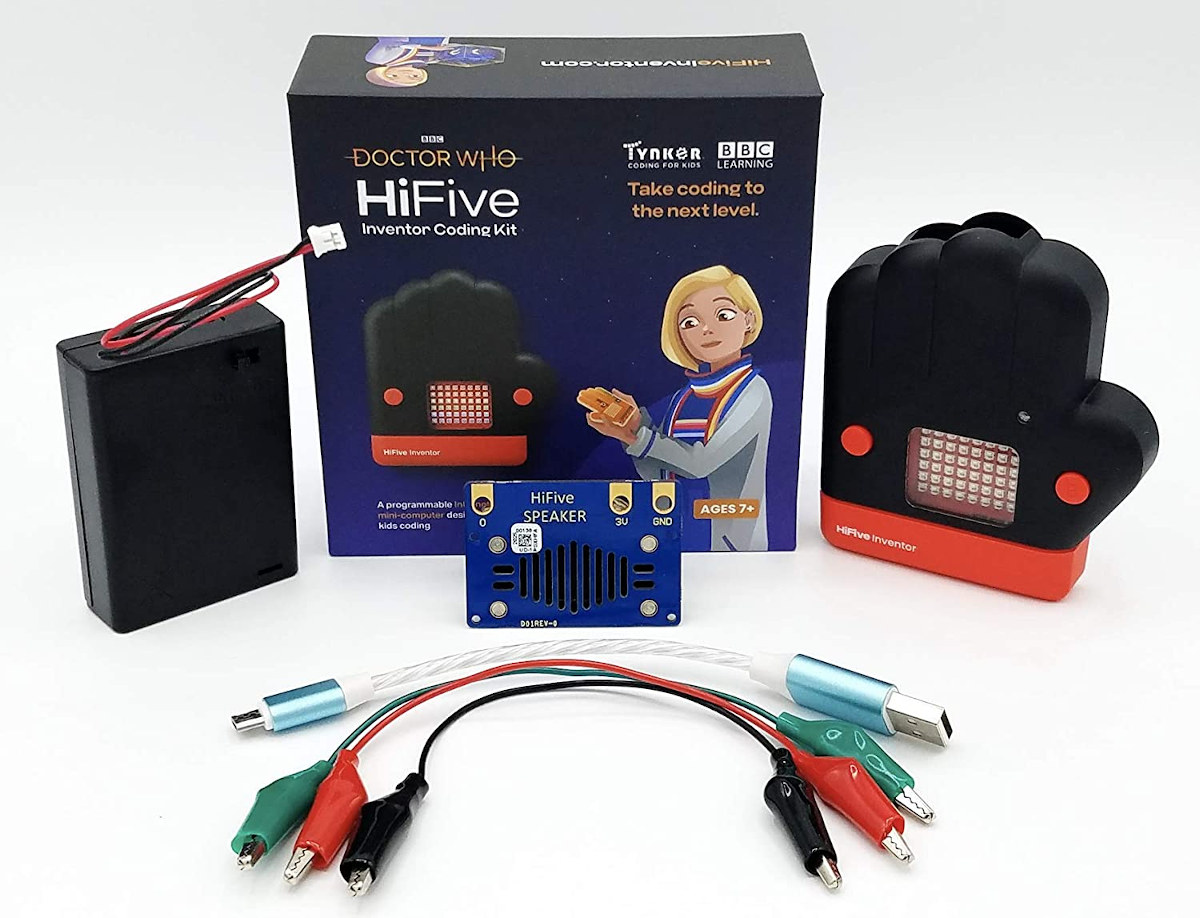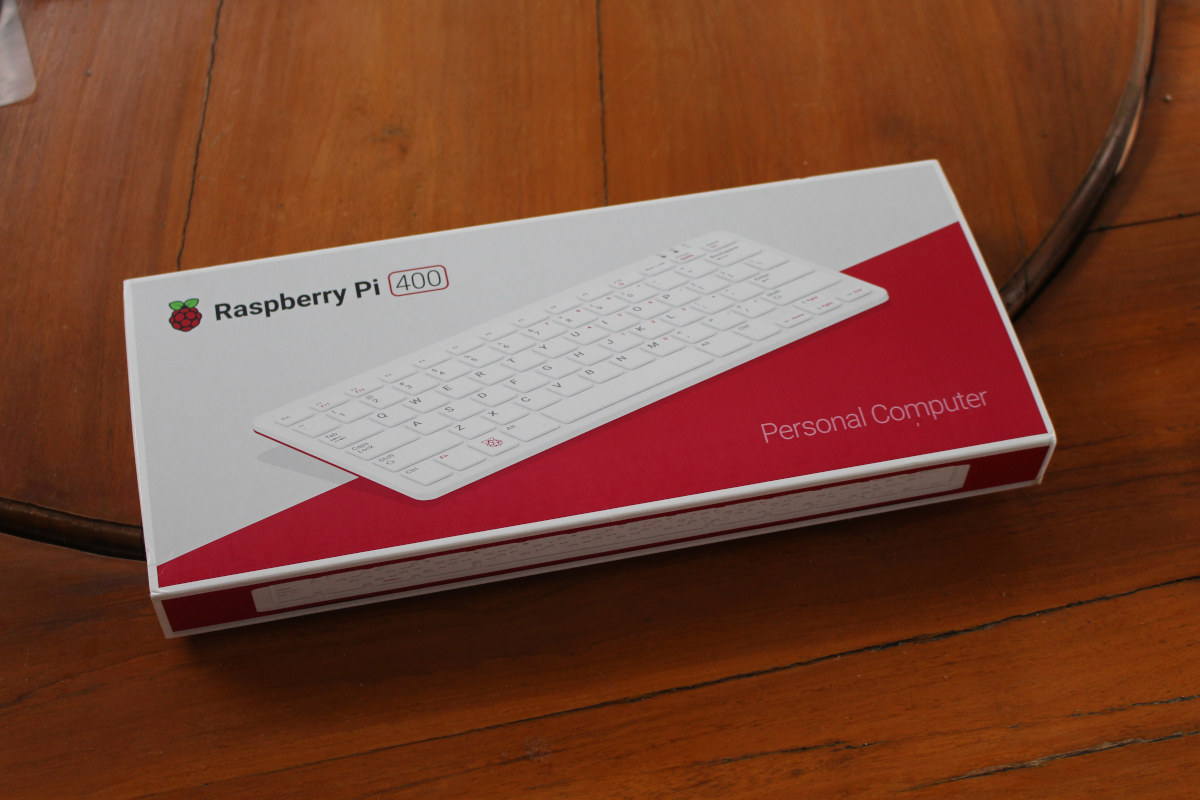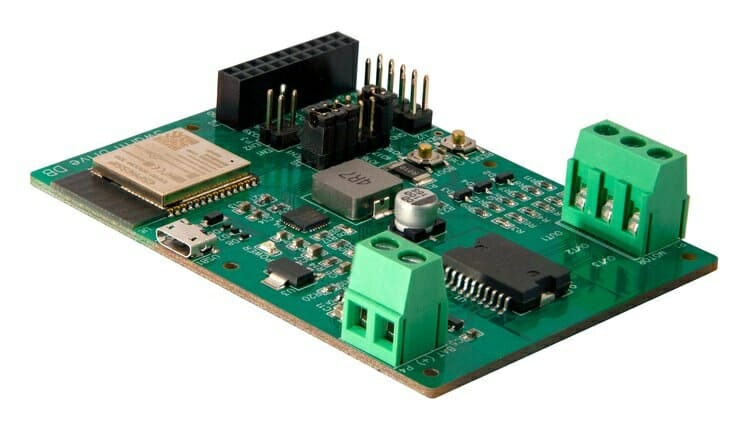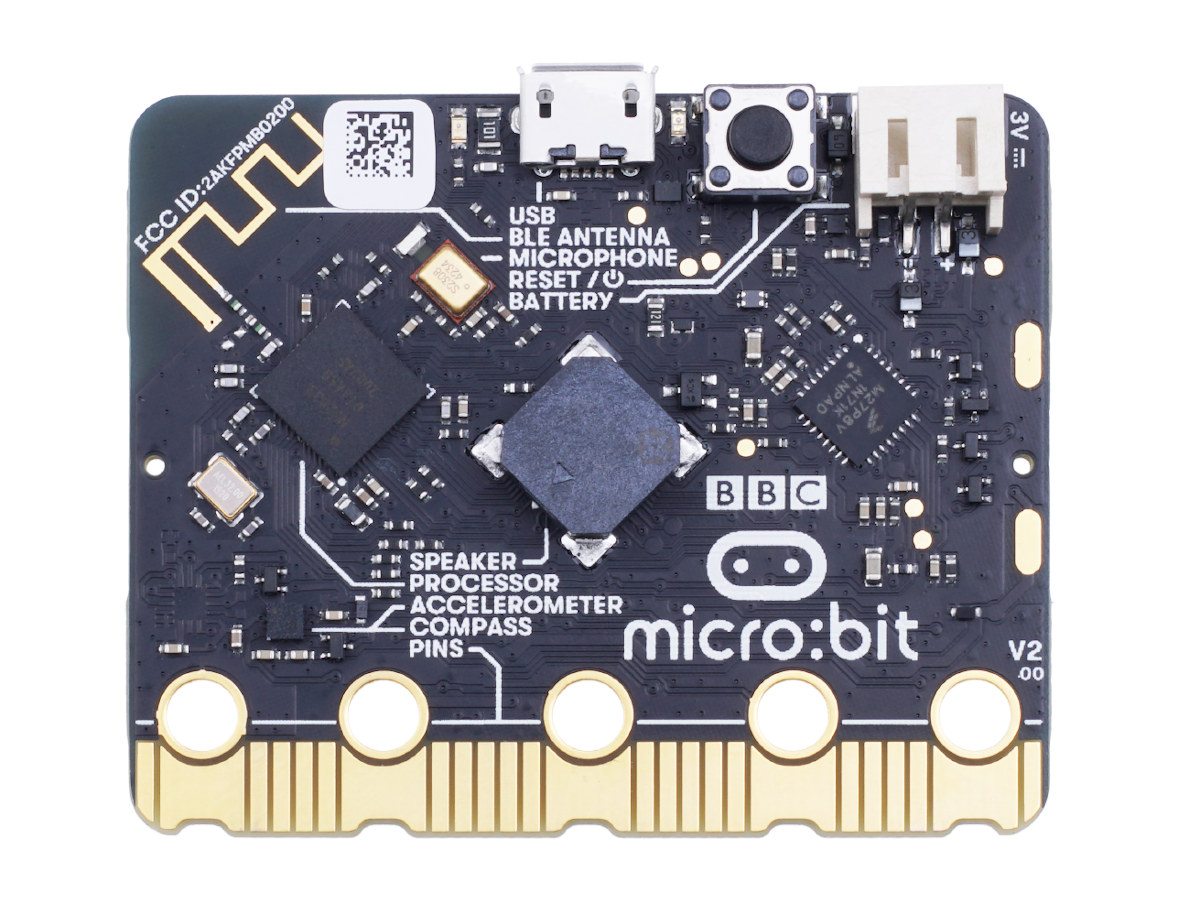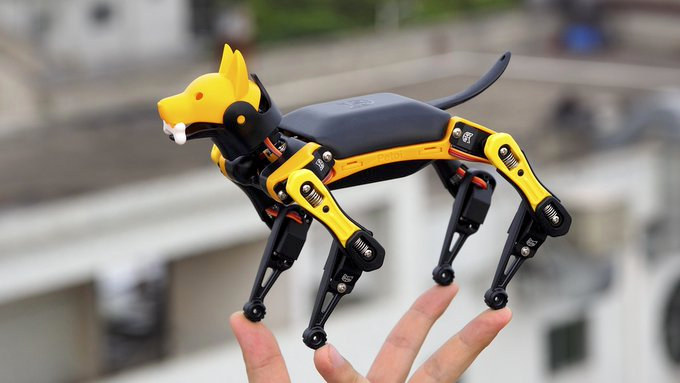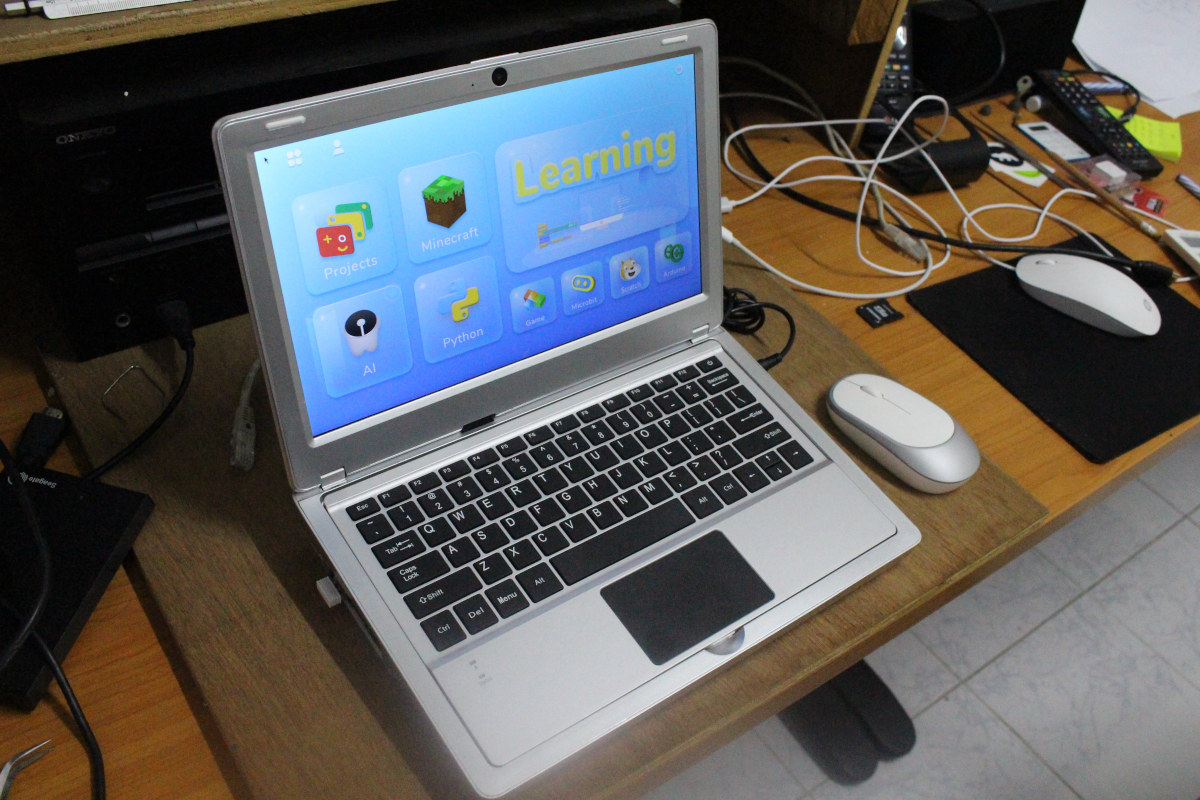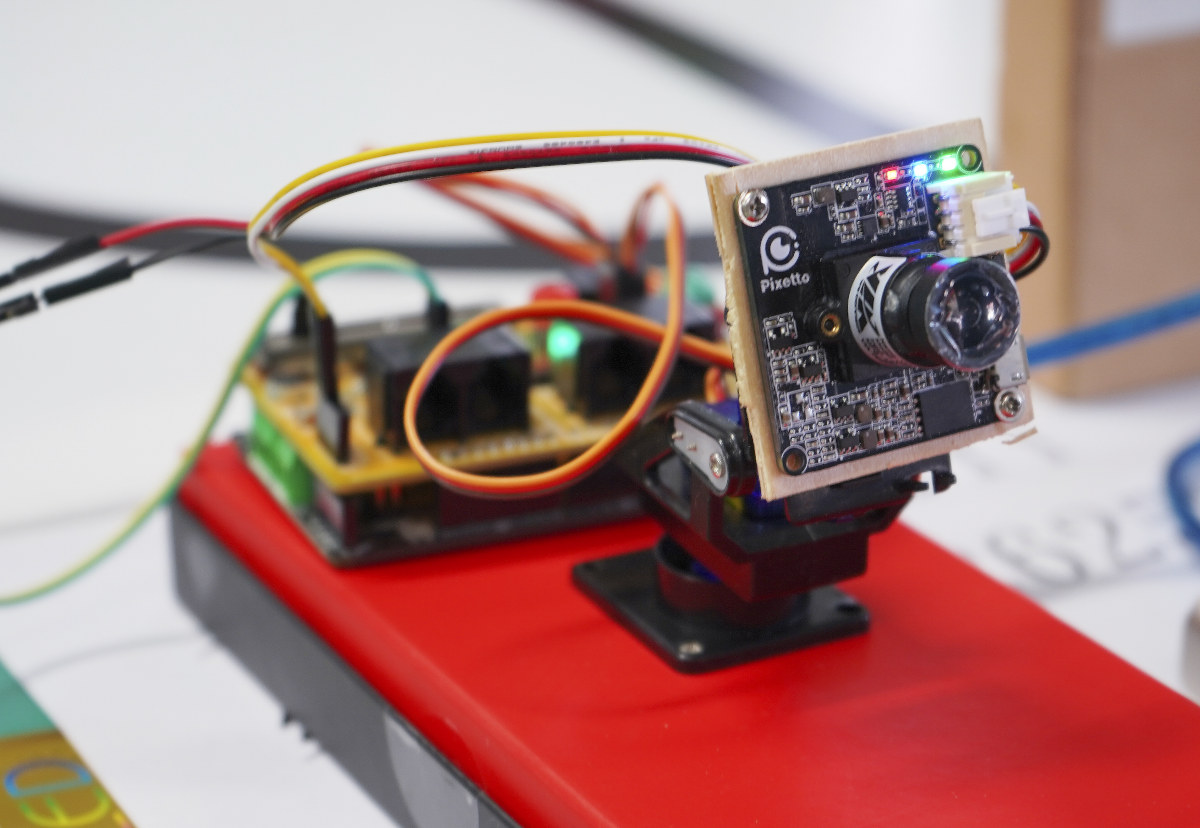The Raspberry Pi Foundation has recently launched the Raspberry Pi 4 keyboard computer with impressive performance thanks to a well-designed cooling solution, and I think it’s a great tool for kids (and adults) who may want to carry a Raspberry Pi around. However, you’d still need a display in each location, so until the foundation releases the Raspberry Pi 4000 laptop next year (full disclose: I made that up!), it might be cool to have a portable display coming with the keyboard PC. That’s what Waveshare is offering with two kits combining a Raspberry Pi 400 together with a 7-inch or 13.3-inch HDMI touchscreen display and other accessories. Not quite as portable as a laptop but it gets close. Here’s the full list of accessories in the kits: Raspberry Pi 400 Kit with keyboard PC with UK keyboard (sadly the only layout option for now), power supply, HDMI cable, preloaded […]
BBC Doctor Who “HiFive Inventor” Coding Kit aims to teach IoT to kids
In what should be one of the first RISC-V education platforms, the BBC, Tynker, and SiFive have just announced the BBC Doctor Who “HiFive Inventor” Coding Kit that comes with an MCU board with WiFi & Bluetooth and guided lessons for kids that teach them to code for the IoT. The HiFive Inventor board is based on a SiFive FE310 RISC-V microcontroller ( the same chip as found in the HiFive1 board) and an ESP32 Solo module for WiFi 4 and Bluetooth 4.x/5.x connectivity. Just like the BBC Micro:bit, HiFive Inventor provides a kids-friendly edge connector with I/O, an LED matrix, sensors, and more. The kit includes the HiFive Inventor hardware platform, a battery holder for three AA batteries (not included), the HiFive Speakers, an illuminated USB cable for power and programming, and alligator clips to connect the speaker or other add-ons to the HiFive Inventor board. HiFive Inventor board […]
Raspberry Pi 400 Keyboard Computer Features 1.8 GHz BCM2711C0 Processor
The Raspberry Pi Foundation has gotten us used to wait for a while between new hardware releases, but right after having announced Raspberry Pi CM4 and CM4 Lite a couple of weeks ago, the company has now introduced Raspberry Pi 400 keyboard computer with many of the same features as Raspberry Pi 4 single board computer, but as a fully integrated computer inside a 78-key keyboard, and equipped with a slightly faster Broadcom BCM2711C0 processor clocked at 1.8 GHz instead of 1.5 GHz. Raspberry Pi 400 keyboard computer specifications: SoC – Broadcom BCM2711C0 quad-core ARM Cortex-A72 processor @ 1.8GHz System Memory – 4GB LPDDR4-3200 SDRAM Storage – Push-push MicroSD card slot for OS (USB boot also works) Video & audio output – 2x micro HDMI ports up to 1 x 4Kp60, or 2 x 4Kp30 Connectivity Gigabit Ethernet RJ45 2.4GHz and 5GHz 802.11.b/g/n/ac WiFi 5, Bluetooth 5.0 and BLE (Bluetooth […]
SwarmDrive is an ESP32 motor driver board for brushless motors (Crowdfunding)
Netherlands based NickStick BV has developed a motor driver board powered by an ESP32 dual-core WiFI and Bluetooth module and capable of controlling brushless DC motors. The SwarmDrive board targets users who want to start experimenting with motor control, and learn about commutation strategies, PID for balance plateau or balance robots, cartesian gantries and spatial navigation, drive by wire and wireless, swarm intelligence experiments, etc. SwarmDrive specifications: Wireless module – Espressif Systems ESP32-WROOM-32D module with ESP32 dual-core processor @ 240 MHz, 4 Mbit flash Connectivity 2.4 GHz 802.11 b/g/n WiFi up to 150 Mbps Bluetooth v 4.2 BR/EDR and BLE Motor Control L6234 triple half-bridge motor driver, 5 A peak current 3-pin terminal block for motor output 3x enable pins are broken out to a bridging connector Programming and debugging – Micro USB serial port via USB to UART bridge, Misc – Boot and reset push-buttons Power Supply Supply Voltage – […]
BBC micro:bit v2 board Unveiled with Nordic nRF52833 SoC, Microphone and Speaker
The original BBC micro:bit educational board was launched in July 2015 with a Nordic nRF51822 Arm Cortex-M0 MCU @ 16 MHz providing Bluetooth LE connectivity, a few I/Os, some buttons, and a LED matrix acting as a small display. The British company has now launched a new update with BBC micro:bit v2 with the same form factor, but equipped with a more powerful Nordic Semi nRF52833 Bluetooth 5.1 Arm Cortex-M4 MCU clocked at 64 MHz and adding a microphone and a speaker. BBC micro:bit v2 specifications: Wireless MCU – Nordic Semi nRF52833 Arm Cortex-M4 MCU clocked at 64 MHz with 128 KB RAM, 512 KB flash, Bluetooth 5.1 LE connectivity “Display” – 25x red LED indicator lights in a 5×5 matrix USB – 1x micro USB port for power and programming via NXP Kinetis KL27Z Cortex-M0+ microcontroller Audio – Built-in MEMS microphone and speaker Expansion 25 pins on edge connector […]
Petoi Bittle Palm-sized Robot Dog uses Arduino and Raspberry Pi for STEM education (Crowdfunding)
You’ve probably already watched a video featuring Boston Dynamics Spot, a headless robot dog used in various industries including healthcare, public safety, construction, oil & gas, etc.. It could also be yours if you wanted a robotic pet dog at home, as long as you have $75,000 US to spare. Petoi Bittle looks eerily similar, but it’s much smaller as it fits in your palm, and could be yours for $225 on KickStarter as a kit to assemble yourself that you may get as soon as December. Bittle robot dog is designed for STEM education and can be programmed using the Arduino IDE, Python, or even Codecraft visual programming IDE. Bittle is comprised of 4 main hardware components: Plastic parts and fixtures – Body, four legs, head (which can be used to hold Arduino modules), springs, screws, etc… Actuators – 9x P1S servo with a controllable angle of 270 degrees, […]
CrowPi2 Raspberry Pi 4 Education Laptop Review
I started my review of CrowPi2 Raspberry Pi 4 Learning Kit a while ago and at the time I showed content from the kit and its first boot. I’ve now spent more time with this very special Raspberry Pi 4 laptop and will focus this review on the education part, namely CrowPi2 software, but will also look at thermal cooling under stress with and without a fan, and try to install another Raspberry Pi compatible board inside the laptop shell. CrowPi2 Education Software It’s quite important to read the user manual before getting started as there are a few non-intuitive steps you may have to take. First I assume the wireless keyboard would just connect after pressing the power button, but it did not. The user manual explains the RF dongle is inside the mouse, and once you connect it you’ll be able to use the keyboard that has some […]
VIA Pixetto Hi3518E V300 HD Camera Board Targets Artificial Intelligence and Machine Learning Education
VIA Technologies has launched the VIA Pixetto vision sensor aims to teach artificial intelligence (AI) and machine learning (ML) to students aged twelve and above. The Linux board features an Hisilicon Hi3518E V300 Cortex-A7 HD camera SoC combined with 64MB RAM, 128MB SPI flash, a MicroSD slot, as well as GalaxyCore GC2053 2M CMOS sensor offering 1920 x 1080 resolution and a 130° field of view. VIA Pixetto hardware specifications: SoC – Hisilicon Hi3518E V300 Cortex-A7 HD camera SoC @ 900 MHz with H.264, H.265, MJPEG/JPEG encoder System Memory – 64MB DDR, MicroSD card slot Storage – 128MB SPI flash Camera – GalaxyCore GC2053 2M CMOS sensor with 1920 x 1080 resolution, 130° FoV Audio – Microphone USB – 1x Micro USB 2.0 port Connectivity – WiFi 4 via Hisilicon Hi1131 low-power Wi-Fi chip and ceramic antenna Expansion – Grove connector Misc – 3x LEDs (Power, OS boot, active status), […]



